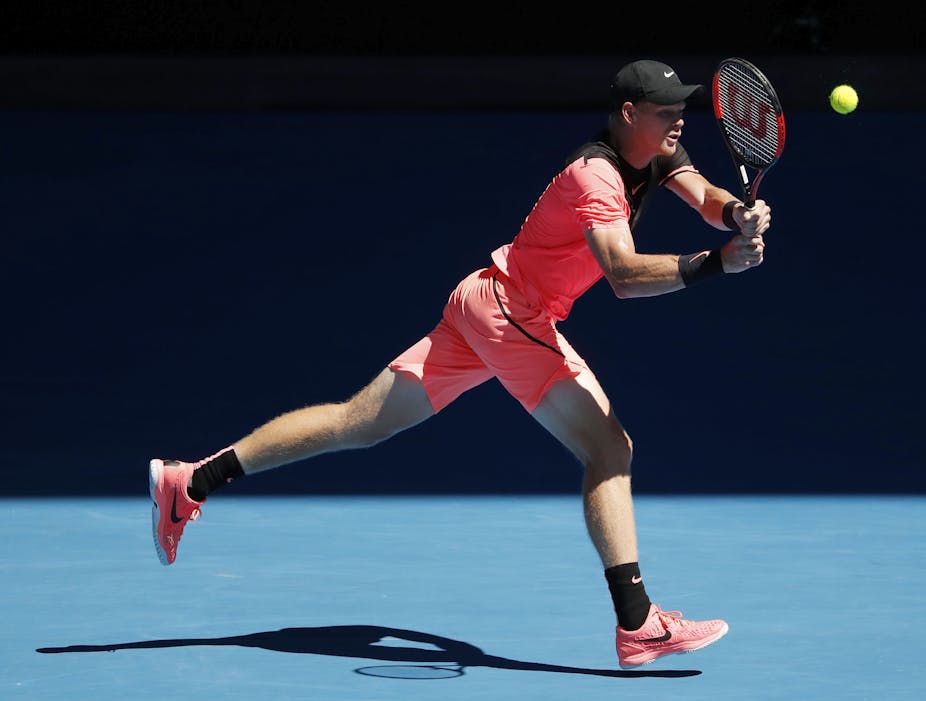The fantastic performances from Kyle Edmund in the 2018 Australian Open should be roundly celebrated – by tennis fans, by Edmund himself and by those people who have contributed to his development in the sport.
His achievement in reaching his first Grand Slam semifinal serves as evidence that the Lawn Tennis Association(LTA) system has the capacity to produce a British player able to compete at the top level (Andy Murray didn’t come up through the LTA Programme, but went to Spain for his formative training).
But this achievement also serves to highlight the inherent limitations of a system that has not been able to produce sustained success in either the men’s or women’s game for some decades.
The headline grabbing exploits of Andy Murray, Johanna Konta, Jamie Murray, Heather Watson and now Kyle Edmund paper over the fact that British tennis still struggles with a chronic lack of depth in the top echelons of the game. A quick perusal of the Australian Open draw shows that across the ladies, men’s and junior draws, British players were outnumbered by many other nations. This is also apparent in the low number of British players – men (two) and women (two) – ranked in the sport’s top 100.
Attracting people to tennis in the face of dwindling overall involvement in sport is a difficult challenge. Retaining and supporting players to reach an elite level is even more problematic.
What is clear is that British tennis now needs a coherent strategy that key stakeholders are invested in – one that works for a wide spectrum of players in the UK.
To this end the LTA has recently released its newest edition of the “Player Pathway”, which has a stated mission to “deliver a pathway for British Tennis Champions that nurtures people, teams and leaders”.
Aside from some notable examples of excellent initiatives in communities on park courts, provision of tennis in the UK still largely takes place in members’ clubs – where the sport tends to be taught by professional coaches who (quite rightly) charge fees that allow them to make a living from the game.
As such, tennis remains a prohibitively expensive sport for most. Any move up the ladder brings increased costs – supporting a junior national player requires parents to come up with around £10,000 of “investment” every year. Raise the level one step further, and the financial viability of a young player surviving on the professional circuit hangs in the balance from week to week – and costs often outweigh the income generated through prize money.
The ball is in the LTA’s court
The new LTA Player Pathway does refer to plans for “subsidised” training sessions at county and regional level. But the challenge remains of providing enough affordable opportunity for a player to reach the level at which they actually qualify for the subsidy. And even if they do, a subsidy that reduces a cost from, say, £40 to £20 for an hour of tennis training, will not make much difference to a family for whom £20 remains prohibitively expensive.
Providing a solution to this situation is complicated – but I would target three areas as a starting point.
First, increase the volunteer workforce of people who can provide opportunities for children to play tennis without the need to charge a fee. This idea is working well for rugby union – where an army of volunteer parents delivers good quality coaching across the country every weekend.
Read more: Focus on 'fearhand' and a strong work ethic can propel Kyle Edmund into the tennis elite
Second, prioritise facility development on state primary and secondary school land. This would allow children who do not normally have access to tennis the opportunity to play before and after school. This initiative would be supported by the excellent work already being done by the Tennis Foundation in training teachers to become tennis “activators”.
Third, any clubs which receive funding from the LTA should have to run weekly community training. The cost of the coach, courts and equipment should not be passed on to the parents, but absorbed by the club as recompense for the LTA funding it already gets.
These suggestions may well be further complicated by logistics – including, for example, the ever-decreasing green space available to schools for sports development. But if they could be introduced, they would enable any child to engage in tennis at a good level at least twice a week.
Individual development, team selection and rising through the ranks would then be a more universal prospect for keen young players, irrespective of their background – and provide more opportunities to find the next Kyle Edmund.

